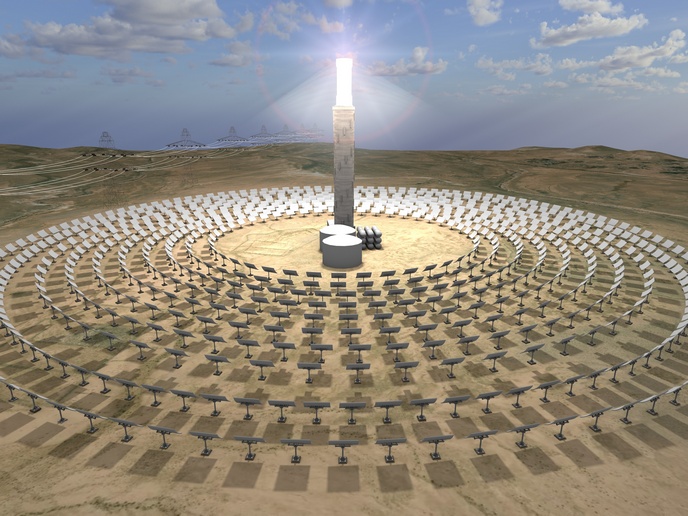Innovative fluid blends boost the potential of solar power plants
Concentrated solar power (CSP) uses mirrors or lenses to concentrate sunlight onto a small area, converting solar energy into heat which is then used to generate electricity. Despite its potential, CSP has long faced economic challenges compared to photovoltaic technologies, mainly owing to being more expensive and capital-intensive. However, developing innovative power cycles with enhanced performance and lowering expenses could transform CSP into a more competitive and viable option.
Power conversion breakthroughs increasing CSP efficiency
The EU-funded SCARABEUS project sought to address this by developing an advanced power block designed to improve heat conversion into electricity, while reducing associated costs. SCARABEUS’ innovative aspect has been the use of a new working fluid, composed of carbon dioxide blended with specific additives. This composition enables the fluid to condense at temperatures as high as 60 degrees Celsius, while withstanding the required peak cycle temperatures, which render it particularly well-suited for CSP applications. The project focused on designing power cycle components compatible with this innovative fluid and validating both the components and the overall concept in a test rig. Project activities first involved identifying the most promising dopants to enhance power cycle performance. Several fluids, including C6F6 (hexafluorobenzene), TiCl4 (titanium tetrachloride), SiCl4 (silicon tetrachloride) and SO2, were identified as strong candidates. A thorough characterisation of these fluids was then conducted to understand their thermodynamic properties and maximum operating temperatures. These experimental results were critical for predicting fluid performance and informing the design of the power cycle components.
Successful validation of CSP technology in a test rig
Following fluid characterisation and testing, the researchers designed and optimised the integration of the power cycle components into commercial CSP plants. “In Seville, a CSP plant demonstrated a levelised cost of electricity lower than EUR 90 per MWh, a significant improvement compared to the EUR 120 per MWh associated with commercial technologies,” notes project coordinator Giampaolo Manzolini. This advancement was attributed to several key factors, including enhanced cycle efficiencies, innovative air-cooled condensers, recuperative heat exchangers with enhanced performance and 25 % lower costs, and turbine efficiency surpassing 92 %. The phase involved validating the concept in a test rig with a fluid mass flow rate of 0.6 kg/s and a thermal input of 200 kWth. The CO2-C6F6 fluid underwent rigorous testing over 150 hours in the test rig in TU Wien, reaching maximum temperatures of 500 °C. These tests confirmed the enhanced performance of the heat exchangers and fluid condensation above 50 °C, thereby validating the SCARABEUS concept.
High-temperature blends transforming CSP technology
SCARABEUS has advanced CSP technology, laying the groundwork for future innovations that could further reduce costs and improve efficiency in renewable energy generation. Most research activities in thermal to mechanical conversion in CSP have focused on supercritical carbon dioxide cycles. However, these cycles often suffer from high ambient temperatures, which can reduce overall efficiency. Recognising this limitation, SCARABEUS has been the first to validate innovative CO2 blends for high-temperature applications. “We pioneered adopting CO2 blends for condensing cycles at high temperatures (maximum temperature of 550 °C and above), setting a new standard in the field. Fluid characterisation, which included assessments of material compatibility, brought about significant improvements quite outstanding in existing literature,” concludes Manzolini.
Keywords
SCARABEUS, CSP, concentrated solar power, power cycle, high temperatures, working fluid, supercritical carbon dioxide



